リモートは、もはや一時的ではない。ARMSNOTE・深井涼介さんが教える「最強のおうち作業環境」づくりのコツ
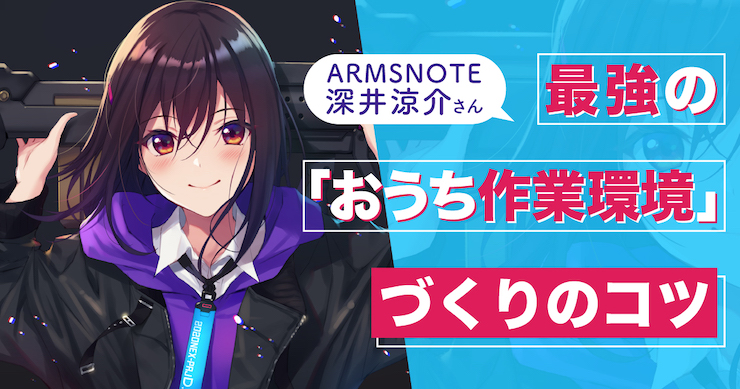
withコロナの時代。学校や仕事でもリモートが増えた今「オンラインでのやりとりが苦痛」「自宅が長時間の作業に向かない」などの問題を感じている方はいませんか?
何事もおっくうになりがちな時期にもかかわらず、イラストからVTuberプロデュースへと精力的に新しい仕事に挑み続ける作家・深井涼介さんにインタビューを実施!
仕事のほとんどを自宅でおこない、打合せもリモートが多くなったという深井涼介さんに、趣味や仕事でイラストを描いている読者から寄せられた”リモートワークあるあるなお悩み”を相談し
・仕事のデジタル化
・リモートワークで効率的に仕事を進めるコツ
・効率的に仕事をするための環境作り
など「リモートワークのノウハウ」をたっぷり伺いました! さらに後半では、「家で作業するのに最適なPCのスペックとは」というテーマで、プロがジャッジするイラスト制作に最適なPCオススメやスペックを深堀りしてお届けします。
地方でマンガ家デビュー。打ち合わせやアシスタントもオールデジタル化
── 深井さんが、プロとして活動を始められた経緯は? どのような環境でお仕事を始められましたか?
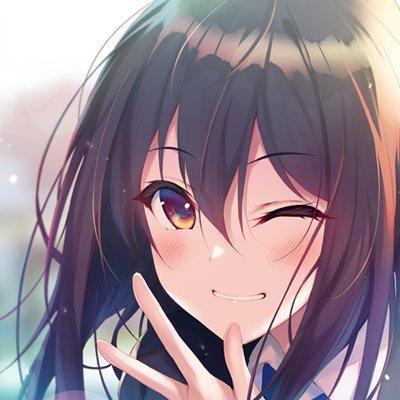
同人誌でマンガを描きながらpixivでイラストを公開していたところ、当時のアスキー・メディアワークスの編集さんからお声がけを頂いて、アニメ『ギルティクラウン』の前日譚にあたる作品のコミカライズのお話(『ギルティクラウンDE』)をいただいたのがデビューのきっかけです。
それまでマンガの作画はアナログでペン入れをする等していたのですが、これをきっかけに液晶タブレットを導入し、フルデジタルの作画環境を整えました。
PCについては当時から既に自作PCでしたね。父が「Windows95ブーム」の頃から趣味でPCを組むような人だったので、そもそものデジタル作画のはじまりは、高校時代に自分用のPCを父のお下がりで手に入れたことでスタートしました。
── 最初はマンガでデビューされたんですね! 作画をフルデジタルにした理由はありますか?

マンガ『ギルティクラウンDE』は今の作風と同じく、機械やガジェットの描写が非常に多い作品だったんですよね。老若男女のキャラクター、メカ、車両や航空機、兵器、背景など、基本はすべて自分で描く必要があったので、デジタル作画の利点を活かして、塵や瓦礫のブラシを作ったり、既に一度描いたメカや背景を素材化して、作業をうまく効率化しました。
当時は現在と異なり、地元である大分県に住んでいたので、デジタル作画とオンライン環境を活用する事で大きな制約なく連載を続けることが出来たのはとても良かったと思います。また、デジタル化する事で時折作画のヘルプを頼んでいた友人に原稿のデータや作画資料を渡し、内容をチェックし合ったり、完成データを受け取ることができるというメリットもありました。
── 地方でマンガ家をされていたということは、打合せなどもリモートで?

そうですね。当時も担当編集さんや原案担当の方とWeb会議をしたりしていました。
その連載は2014年に終わり、そうしてしばらくした後、比村奇石先生の『月曜日のたわわ』など、「SNSを活用してオリジナル作品を見てもらう」という、今にも続く新しい流れがやってきたんですよね。
そこで自分の得意分野を見てもらおうと考えてTwitter上で始めたのが『ARMSNOTE』でした。
── 「ARMSNOTE」シリーズはフィギュア化や個展開催などもされましたね!

『ARMSNOTE』を続けることで、それを見た誰かが動いてくれたらという密かな想いがありましたが、とてもありがたいことに、(作品公開から)間もなくマジックモールドさんからフィギュア化のお話を頂きました。
その後にfigma化のご縁を、2019年には個展のお話も頂き、10月から11月にかけて秋葉原で開催することが叶いました。

個展の際には同時開催のイベントとして、深井が制服のデザインを担当させて頂いた、同じく秋葉原にあるメイドカフェ「アキバ絶対領域A.D.2045」にて『ARMSNOTE』とのコラボイベントや、コラボフードの企画にも携わらせて頂きましたね。
「ARMSNOTE展」が開催されていた2019年には住まいを大分県から東京に移しており、それまで主流だったオンラインでの打ち合わせほか、対面での打ち合わせもよくできるようになりました。個展の開催やフィギュア化などでは、「現地に行く」「実物を見る」という利点がとても役に立ちますね。
VTuberグループのプロデューサーとしてオンラインを活用
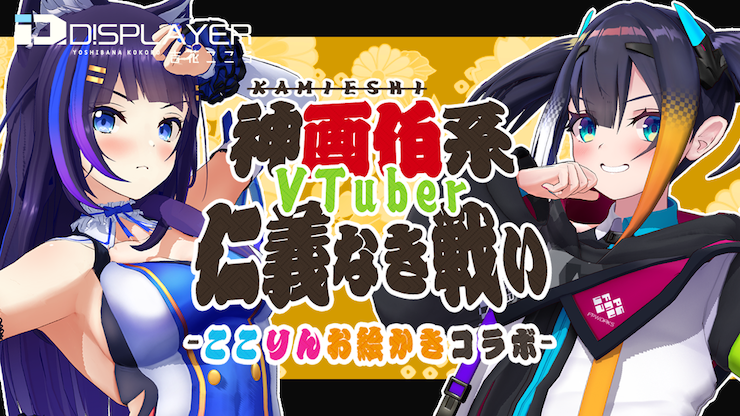
── VTuberプロジェクトを始めたきっかけは

『ARMSNOTE』の活動の中、監修や打ち合わせを重ねて出来上がっていくフィギュアや、「ARMSNOTE展」の開催を通じたプロデュースやアートディレクションをした事で、「人と何かをすることの楽しさ」をよく実感して、「VTuberのプロデュース」を構想し始めました。
ちょうど時勢は「SNS発の個人作品」のムーブメントから派生し、米山舞先生やBUNBUN先生らが参加している、「SSS by applibot」(トリプルエスバイアプリボット)など、「クリエイター同士が協力して事業や企画を立てる」流れも生まれて来ていたことも、気持ちの後押しになっていましたね。
そうして、『ARMSNOTE』を始めた事で知り合った友人のぽんぷ長さん、そしてVTuberである吉花こころちゃん、燐夏・ライゼンバインちゃんとともに「サークル型」の運営をするVTuberプロジェクト、「DiSPLAYER」をみんなで立ち上げました。
── 「DiSPLAYER」では、「吉花こころ」さんと「燐夏・ライゼンバイン」さんの2人が活動されていますが、どういう形で進めていますか?

コミュニケーションができるからこそ、さまざまな挑戦ができるんだなと感じます。
2020年8月のデビューから2か月以上が経過し、ふたりともそれぞれの話題性を広めつつあるのが嬉しいですね。今後は独自の展開や、コラボ企画、「歌ってみた」等を通じて、もっと多くの人に知って楽しんでもらいたいと考えていますが、それ以上に何よりも「自分たちが楽しいと思いながらやれる事」を大切にして、焦らずに進みたいと思っています。
「一人よがりの楽しさ」のようなもので誰かを付き合わせたりはせず、長所を褒め、至らない部分があれば指摘し合い、そして受け止めて確かに改善する。自身も含めてですが、「DiSPLAYER」はそれが出来るメンバーが集まっていると感じています。
VTuberは本当に日進月歩、多彩な変化を見せる熱すぎるコンテンツです。今後は僕達と同じような「サークル勢」が増えていくかもしれない、それはもっと楽しい時になるだろうな、という期待もありますね。
リモートワークはこう乗り切れ! 深井さんがお悩みを一挙回答!
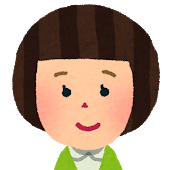

A.イラストやデザインなど、クリエイター業をしていると、「デスクトップにデータをとりあえず置く」という事が日常なので、その読み込み、書き出しの高速化などからM.2コネクタに搭載するNVMe規格のSSDは特におすすめです。
深井はPCメーカー・ツクモさんのBTOでオーダーさせて頂いた「G-GEAR neo」を使用しています。ゲーミングPCを基本に、画像制作ソフトの多用をふまえたカスタムをしていますね。グラフィックボードはGeForce GTX 1080 Tiです。
ストレージは2つあり、CドライブにM.2 のSSD(500GB)、データ保存用にウェスタンデジタル製のHDD(3TB)をセットしています。
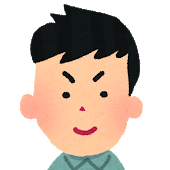
Q.学生のお絵描き初心者です。プロとして活動されてから作業環境へのこだわりはどのように変化されましたか? 椅子などもこだわって選ばれましたか?

A.学生さんですね!PCは安定性や寿命に定評があるメーカーのハードウェアを優先して選ぶといいと思います。競争による、いわゆる適者生存も進んで、今現在は「このメーカーはちょっと……」というものもあまり無くなってきていますが、「少しばかり高額でも定評のあるメーカーを選ぶ」のは大事かもしれません。
椅子の話は、学生さんだとまだ実感がないかもしれませんが、腰痛には気をつけてください……!深井は20代後半に差し掛かった頃から座りすぎによる腰痛が出始めたので、今は筋トレをはじめとした運動を重ねつつ、現在の椅子はオカムラの「バロン」というものを使用しています。
ハイエンドの椅子ではよく「アーロンチェア」が挙げられますが、オフィスチェア専門店の方のお話によると、実はアーロンチェアは僕のような液タブユーザーのように「前のめりになって作業をする」体勢とは相性が悪いのだそうです。
プロかどうかとはあまり関係が無いかもしれませんが、PCや椅子などの環境然り、なんであれ「わからない事は調べる、確かめる」習慣を学生のうちに身につけておくだけで、結構その後が違うかもしれないです。
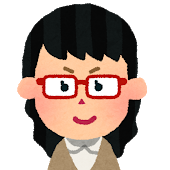

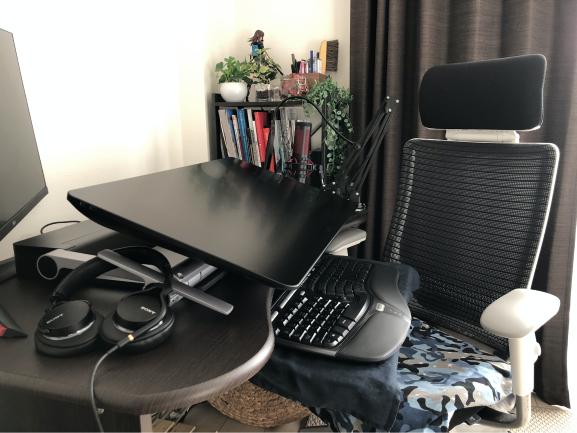
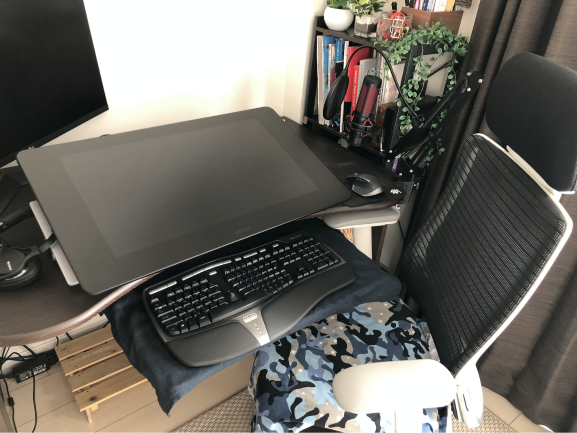
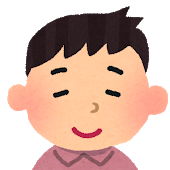
Q.在宅での活動が増え、仕事の打ち合わせやサギョイプ(skypeに代表されるように、人とオンラインで話しながら作業をすること)など通話しながら絵を描くことがふえました。先生のオススメの音声環境はありますか?

A.人と話すのが何より好きなので、深井も通話での打ち合わせや雑談は今年はとても増えました。ヘッドホンはSONYの「MDR-1AM2」というモデルを使用しています。
音質も着用感もよく、重すぎる事もないので作業時に長時間着用していてもあまり負担になりませんね。マイクはゲーム配信などもたまにやる事があるので、この春に「HyperX」ブランドの「QuadCast」というマイクを導入しました。USBマイクとしては非常に音質が良く、本体をタッチするだけでミュートに出来る点など使い勝手もいいのでおすすめします。
深井のYouTubeチャンネルでレビュー動画も投稿しているので、よろしければ!(宣伝)
リモート作業サクサク! クリスタにも対応したTSUKUMOのPCを深井さんがレビュー
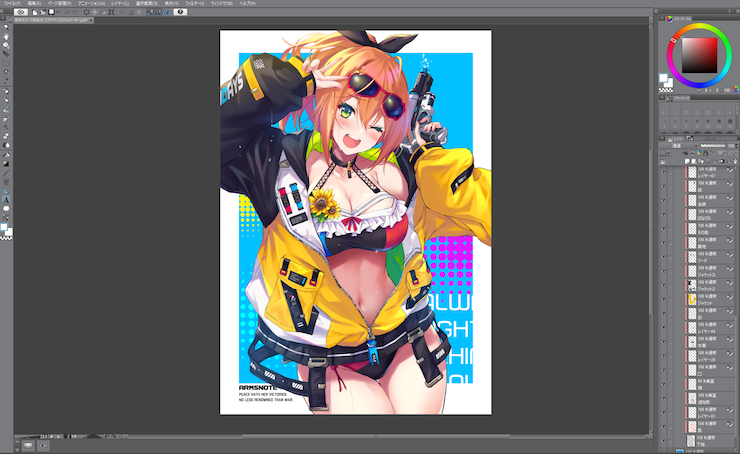
深井さんも自分のPCをオーダーで注文したTSUKUMOは、自分の作業スタイルや希望に合わせたPCのカスタマイズができて、安定性にも定評があります。
自分の用途にあったラインナップからPCを選択、そのあとさらに細かい要望にあったカスタマイズができて、自分だけのスペシャルPCが作れてしまう。今回は、イラスト制作で大人気の「CLIP STUDIO PAINT」動作確認済み推奨PCの2モデルを深井さんがチェック! モデルのそれぞれのポイントとカスタマイズのアイデアを出していただきました!

■CLIP STUDIO PAINT 動作確認済推奨PC CM7J-C201/T
OS:Windows 10 Home
CPU:インテル Core i7-9700
グラフィック:NVIDIA GeForce GTX 1650
メモリ:8GB DDR4 SDRAM
記憶装置: 240GB SSD + 1TB HDD
光学ドライブ: DL対応 DVDスーパーマルチドライブ
※日本語キーボード / 光学式ホイールマウス (USB接続 /色:黒)付
CLIP STUDIO、モニタは別売となります。

こちらは、上のモデルよりCPUも高速で動画編集もばっちり。グラフィックボードも搭載されていてイラスト制作に心強いです。カスタマイズは、やはりメモリは16GBを搭載に変更、ここまで高スペックならSSDもM.2に変更して大容量にすれば、高速で動きます。CPUグリスやCPUファンまでカスタマイズできるのはスゴいので、自分好みにいくらでも変えられる……。自分も新しいPCが欲しくなってきますね(笑)
リモートワークを継続「極意」は、筋トレとマインドも鍵に
── 深井さんがリモートワークを続けるうえで、特に重要だと感じていることはありますか?

あくまで僕個人の感覚ですが、「自分の身体が一番重要なハードウェア!」だと思っているので、パソコンをはじめとした作業環境以上に体力やメンタルの維持、それらのアップを心がけてますね。
日々の買い物でも良いから、まず足の筋肉を意識して歩いたり、自転車に乗ったり、あとは長く続けられる、かつキツめの筋トレを日々やってみたり。
今は週2~3回通っているジムに通い始めたきっかけは、長時間の座り過ぎで一定の姿勢を維持しすぎた腰痛でした。体力と筋力がつくと身体の痛みの軽減のほか、さらに集中力やメンタルもより強くなった気がします。
── 通勤がなくなるだけで驚くほど歩かなくなりますもんね……。

「通勤や通学が運動」を兼ねている場合、それが無くなると一気に体力は低下しそうですね。フリーランスも出不精だと本当に動く事がなく、それで体力とともにメンタルも低下させてしまって、仕事や活動そのものを上手く回せなくなってしまう方を見かける事があります。
なので体力の維持やアップのほか、上手く気分転換をする方法を見つける事も大事ですし、仕事をする上では「プロジェクトに加えて頂いている」というようなイメージをもって、フリーとはいえひとりで仕事をしているのではなく、チームの一人だという事を念頭に置けば、それが仕事に向かう姿勢にもなるかもしれませんね。
── しっかりとした体力とマインドをまずは持つことがやっぱり基本なんですね。

これは30歳を迎えて本当に思う事が多いですね。20代の半ばまでは、(自分と)同じような働き方で切磋琢磨していたけれど、体力やマインドを要因とするような悩みやトラブルで、活躍の場から退く事になった話をよく聞きます。
その解決、解消の手段は僕自身もずっと模索している所ですが、うまく出力ができる環境を自分自身と一緒に整える事は、きっと良い方向に向かうと思っているので、身体やメンタルに不調をきたさない体力づくりやチェア、デスクなどの整備、PCは可能なかぎり自分のニーズに合った性能のものを準備することなどは続けたいですね。
自分がTSUKUMOさんのPCを使用しているのは、「こういった性能のものを導入したい」というイメージによく応えてくださるラインナップがあるからなので、クリエイターの方や、今はライブストリーマーの方なども、一度利用してみるといいかもしれませんよ。







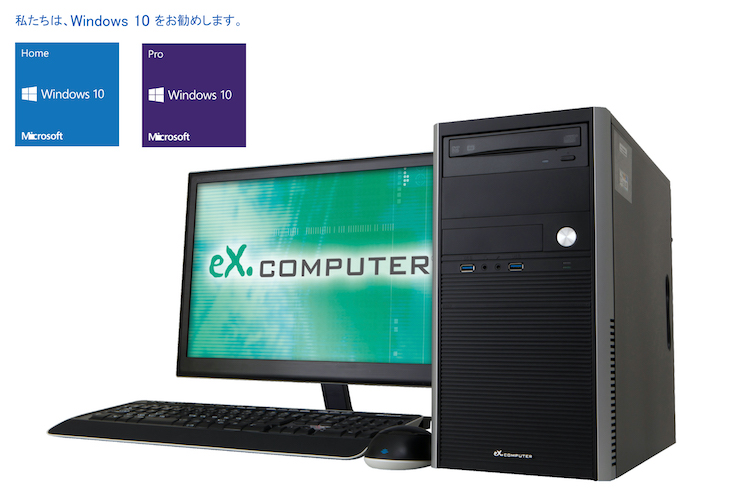


■CLIP STUDIO PAINT 動作確認済推奨PC CM5J-B201/T
OS:Windows 10 Home
CPU:インテル Core i5-9500
グラフィック:インテルHD グラフィックス 630 (プロセッサー内蔵)
メモリ:8GB DDR4 SDRAM
記憶装置: 240GB SSD + 1TB HDD
光学ドライブ: DL対応 DVDスーパーマルチドライブ
※日本語キーボード / 光学式ホイールマウス (USB接続 /色:黒)付
CLIP STUDIO、モニタは別売となります。